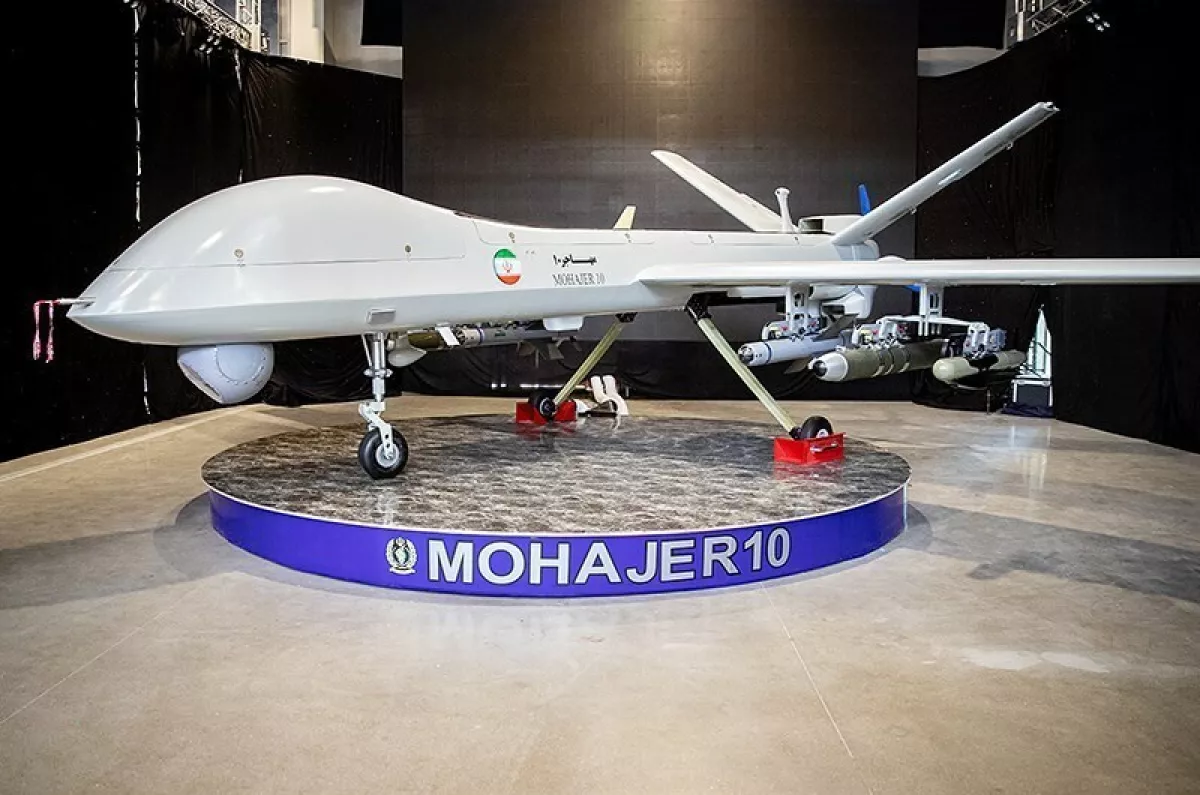Over 100 Iranian drones against Israel Analysing the strike equipment
Amid a sharp escalation between Iran and Israel, in the early hours of June 13, Israel began intercepting drones launched from the territory of the Islamic Republic. According to The Times of Israel, cited by Caliber.Az, the interceptions are taking place outside Israeli airspace, and some of the drones are expected to reach the Israeli border within the next hour. In total, it is reported that between 100 and 150 drones were launched.
Against this backdrop, Caliber.Az analysed which specific models of Iranian drones could have been deployed, assuming all of them were launched from within the Islamic Republic’s territory, without using external footholds. Given the distance of over 1,000 kilometres between Iranian launch areas (including Isfahan, Yazd, Kerman, and others) and targets in Israel, only medium- and long-range drones are suitable for such an operation.
The most likely model for mass deployment is the Shahed‑136 — a single-use drone with a range of up to 2,500 kilometres and a cruising speed of about 180–200 km/h.

Shahed‑136
These drones are launched in series from rail-mounted launchers, do not require external guidance during flight, and are well-suited for mass deployment as part of the first wave. Considering the number of drones involved, the Shahed‑136 is highly likely to form the core of the announced attack.
Additionally, heavy drones such as the Shahed‑149 Gaza may have been used — MALE-class (medium-altitude, long-endurance) UAVs with a range of over 2,000 kilometres and a cruising speed of up to 340 km/h.

Shahed‑149
The payload capacity reaches up to 500 kg, with a flight endurance of up to 24 hours. The use of the Shahed‑149 was likely limited and auxiliary in nature — for navigation support, data relay, or precision strikes on high-priority targets.
Additionally, Mohajer‑10 platforms may have been involved in the operation — a newer development first unveiled in 2023. This drone can stay airborne for up to 24 hours, carries guided weapons, and has a range of up to 2,000 kilometres. Such platforms are suitable for escorting the main wave and transmitting real-time information about the strike results.

Mohajer‑10
Other models, such as the Mohajer‑6 or Mobin, are unlikely to have been used if the launch was carried out exclusively from Iranian territory. Their operational range is limited to 400–500 kilometres, making it impossible for them to reach targets in Israel without intermediate bases or launch sites outside the Islamic Republic.
Thus, assuming the attack was launched solely from Iranian territory, the strike package most likely consisted primarily of Shahed‑136 drones, with limited involvement of Shahed‑149 Gaza and Mohajer‑10 platforms in reconnaissance, control, and targeting roles. Given the distances and flight speeds, most of the drones would be able to cover the route from central Iran to the Israeli border in 6 to 9 hours. According to official reports, some were intercepted outside Israeli airspace, while the remainder may reach Israel’s air defence zone within the hour.
At this stage, the exact composition of the drones used has not been officially disclosed. However, the technical specifications, distances involved, and the operation's timeline make it possible to narrow down the likely platforms to a few models capable of carrying out a long-range mass strike.








